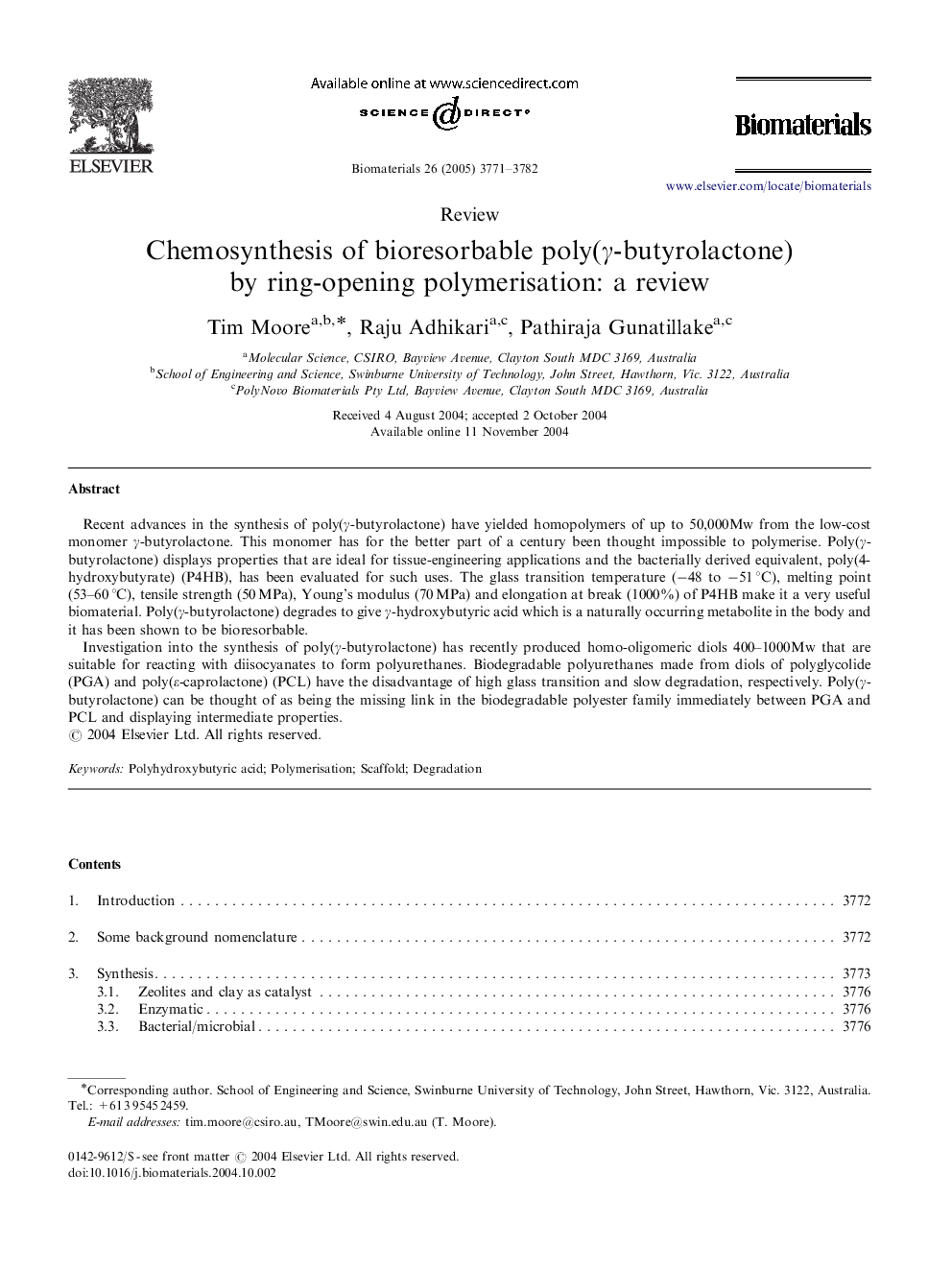| کد مقاله | کد نشریه | سال انتشار | مقاله انگلیسی | نسخه تمام متن |
|---|---|---|---|---|
| 12479 | 794 | 2005 | 12 صفحه PDF | دانلود رایگان |

Recent advances in the synthesis of poly(γ-butyrolactone) have yielded homopolymers of up to 50,000Mw from the low-cost monomer γ-butyrolactone. This monomer has for the better part of a century been thought impossible to polymerise. Poly(γ-butyrolactone) displays properties that are ideal for tissue-engineering applications and the bacterially derived equivalent, poly(4-hydroxybutyrate) (P4HB), has been evaluated for such uses. The glass transition temperature (−48 to −51 °C), melting point (53–60 °C), tensile strength (50 MPa), Young's modulus (70 MPa) and elongation at break (1000%) of P4HB make it a very useful biomaterial. Poly(γ-butyrolactone) degrades to give γ-hydroxybutyric acid which is a naturally occurring metabolite in the body and it has been shown to be bioresorbable.Investigation into the synthesis of poly(γ-butyrolactone) has recently produced homo-oligomeric diols 400–1000Mw that are suitable for reacting with diisocyanates to form polyurethanes. Biodegradable polyurethanes made from diols of polyglycolide (PGA) and poly(ε-caprolactone) (PCL) have the disadvantage of high glass transition and slow degradation, respectively. Poly(γ-butyrolactone) can be thought of as being the missing link in the biodegradable polyester family immediately between PGA and PCL and displaying intermediate properties.
Journal: Biomaterials - Volume 26, Issue 18, June 2005, Pages 3771–3782